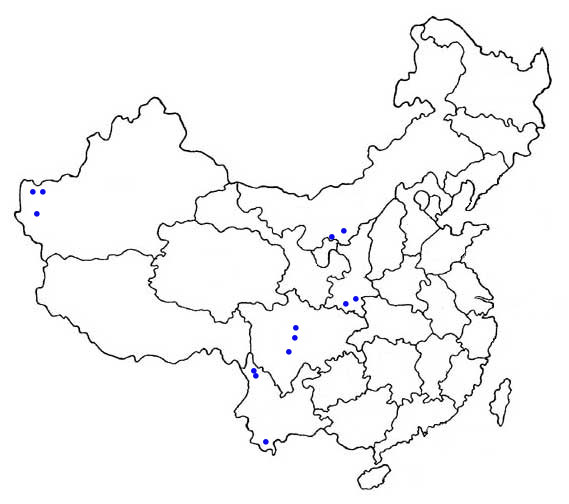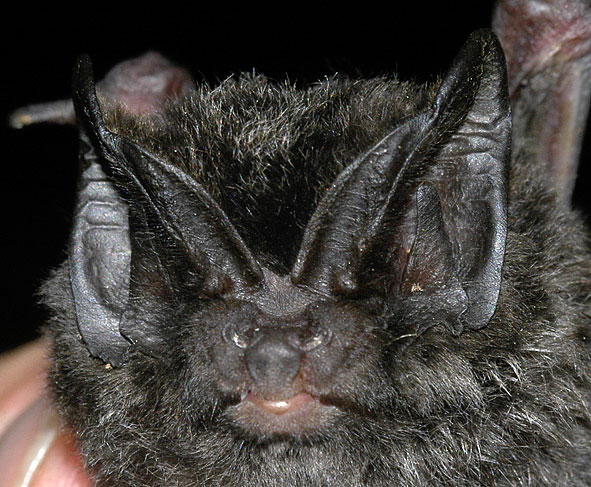Barbastella leucomelas
Eastern barbastelle
Morphological description Life history Distribution Habitat Roost sites and roosting patterns Emergence and flight pattern Foraging behaviour Echolocation calls Status and protection
Morphological Description
· Dorsal fur is black-grey, often frosted in appearance. Ventral fur is black or grey.
· It is a small bat. Average forearm length 40.5mm (38.7-42.1mm, as given by Bates & Harrison (1997). We caught one male with a forearm length of 37.8 mm on Mount Emei, Sichuan in July 2005. The bat weighed 9.4g.
· The ears are relatively wide, the outline of each ear is square. The tragus is pointed, and has a lobe on the lower margin in the specimen photographed above. The face is distinctive,
· This species is very similar to B. barbastella of western Europe, from which it is distinguished by its larger size and broader baculum, and by not having a lobe on the edge of the pinna (although this may not be a reliable diagnostic character) (Rydell & Bogdanowicz 1997).
Life history
· Can give birth to twins (Roberts 1977).
Distribution
Ranges from Ethiopia, Sinai and the Caucasus to the Pamirs, north Iran, Afghanistan, India, western China and maybe Indo-China (Bates & Harrison 1997). The mainland Chinese distribution is shown by dots on the map (as given by Zhang et al. (1997). Also found on Taiwan. We have captured this species on Mount Emei in Sichuan. The status of barbastelles captured around Beijing is currently under review. In the light of the finding by Zhang et al. (2007) that at least two species of barbastelle - B. leucomelas and B. beijingensis sp. nov. are found in China, which species are represented on the distribution map remains unclear. The name B. darjelingensis may be the correct name for this taxon, given recent phylogenetic analyses which show that Egyptian B. leucomelas leucomelas are closer to B. barbastellus than to B. leucomelas darjelingensis from Sichuan and Taiwan (Zhang et al. 2007).

Habitat
· Elevation of their habitat is between 1140-2460 m (Bates & Harrison, 1997).
Roost sites and roosting behaviour
· Roosts in crevices and under bark in the summer, and has also been found in caves and mine shafts.
· Emerges late according to Blanford (1888-91).
Foraging behaviour
· Little known.
Echolocation calls
· Unknown, but its congener B. barbastella alternates two types of call (Denzinger et al. 2001).
Status and protection
· There is no estimation of population size in China for this species.
· Eastern barbastelle bats are listed as LR/nt, assessed by the Red List of Threatened Species (IUCN, 2006) and are not listed in the Law of the People's Republic of China on the Protection of Wildlife in 1989. they are found over a wide geographic range but nowhere appear to be common.
· Caves and probably old trees should be protected as their habitats.